The University of California at Berkeley Botanical Garden is a wonder to behold. While visiting family in Oakland, we spent the morning exploring the garden. It is divided into regions and countries, profiling native plants. Though I felt most at home in the “Eastern Woodland” area, I was most fascinated by the things in the “Plants of the American Deserts” area. Let me hasten to add that “American” refers to both North, Central and South.
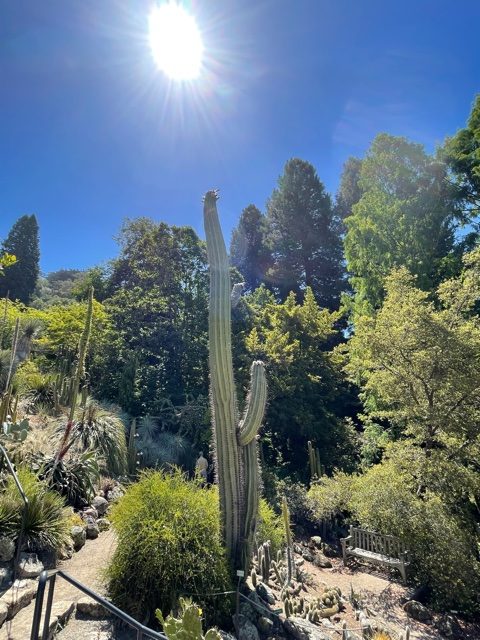
Tha plants native to the desert are both alien and awe-inspiring to me, partly because they are so different from the plants in my own garden. Sporting big, thorny, thick leaves, the cacti demanded – and received – the respect of distance. Spines from the Opuntia, or prickly pair cactus, are barbed, making them almost impossible to extract if they become imbedded in your skin. The fruit is edible and considered delicious, though harvesting and extracting the juice from the fruits without getting speared is a daunting task.
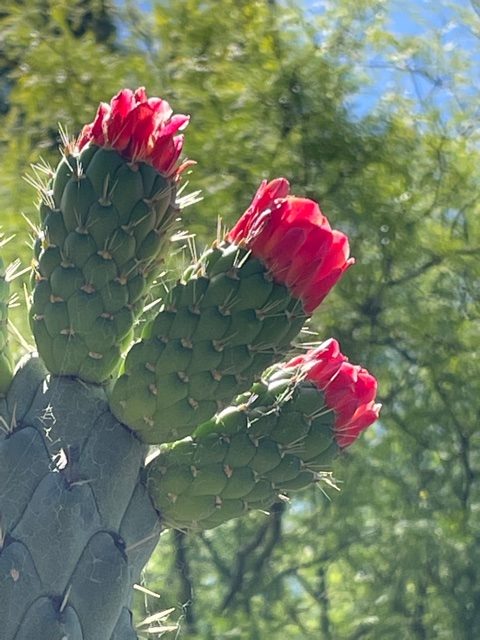
Other cacti in the same genus, such as the Beaver-tail cactus, sported beautiful blooms in yellow, orange and red.

There were several Agave species found in the gardens, each one more outrageous and unusual than the next. Agave parryi, native to southwestern parts of the U.S. is also called the “artichoke agave” because of the configuration of the leaves. Bright yellow blossoms are found on stalks that can grow as tall as 12 feet.
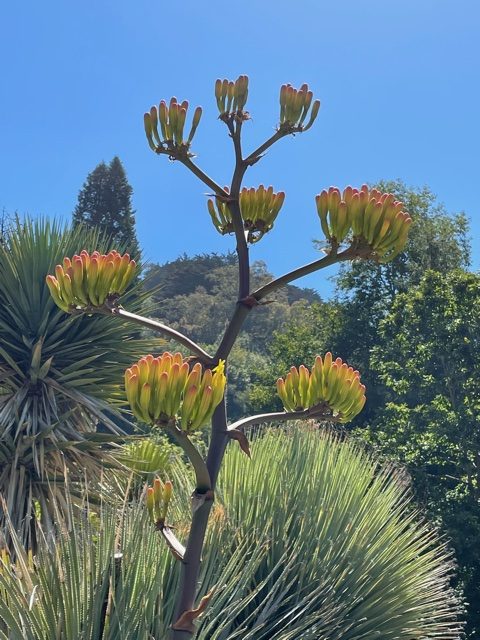
The plant dies after flowering because it takes all of the plants energy and resources to produce these magnificent blooms. Blue agave, A. tequila, is the source of not only tequila but also of agave “nectar”, a syrup often used in place of sugar. Before you get too excited about using this “natural” sweetener, you should know that agave syrup has a higher fructose level than even table sugar.

Agave mites is just plain strange looking. The leaves are much smaller and less imposing than other agaves but the flowering stalk, which can grow 8 feet in length, shouts for attention.
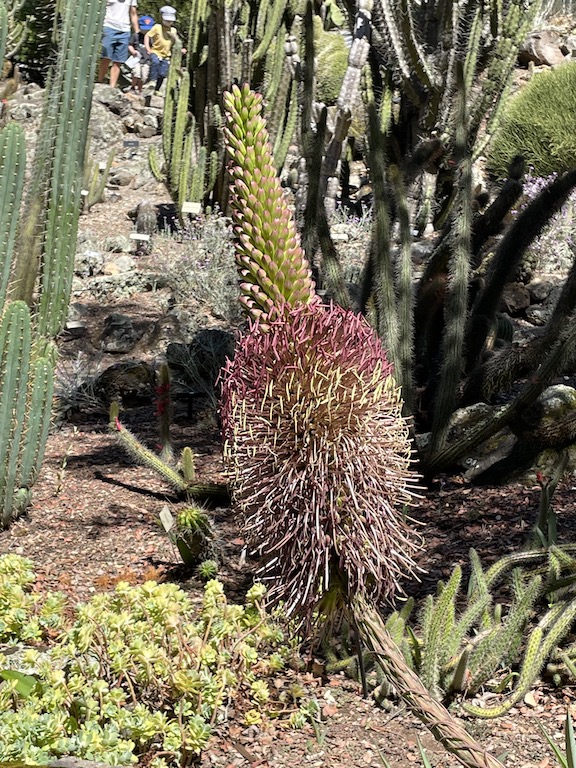
Echinopsis is known as the hedgehog or sea-urchin cactus and has startlingly beautiful flowers which occur at the ends of stout, stumpy branches. As indicated by the name, the plant is covered with sharp spines, similar to those found on a hedgehog.
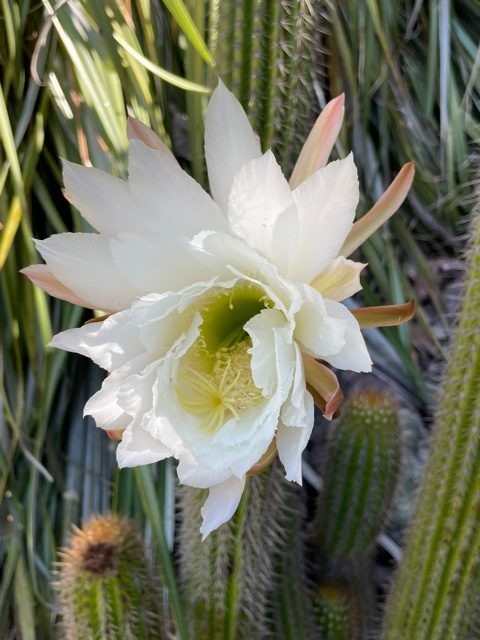
Like reading science fiction, my experience of seeing these plants was one of wonder at things so alien and unusual. All spiny and prickly, I wouldn’t want them in my back yard, but then again, they wouldn’t want to be in my backyard! Everything has a place and frankly, I’m glad my “place” is not a desert.
